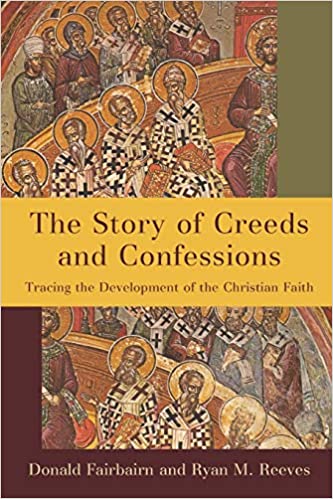A Brief Book Notice from Books At a Glance
by Fred G. Zaspel
Understanding the developing grammar of the church’s faith as stated and defined in its creeds and confessions is essential to understanding that faith itself. Creeds and confessions arose to preserve and standardize the common faith but also to define that faith for faithful worship and ministry. This book tells that story in a very illuminating way, providing crucial historical context as well as theological precision.
I will mention one feature of this book that was very annoying, however. It has to do not with content but with publication decisions: the gray (not black) print on the off-white pages makes for labored reading. This was so annoying I asked others for feedback on this score, and the consensus was unanimous. I cannot imagine why the publishers would produce a book so uneasy on the eyes. If you use Kindle at all you will doubtless be happier with that format.
But from the perspective of content, I have no complaints. It is a superb work, thoroughly informed, engagingly written, and beneficial in every way. An excellent read for both readers of theology and of church history. An outstanding guide for Historical Theology, a major achievement, and certainly a recognized resource for years to come. Highly recommended.
Table of Contents
1. Beginning the Story
Part 1: The Era of the Creeds (100-500)
2. The Creedal Impulse in Scripture and the Early Church
3. A Christian Empire and Creedal Standardization
4. The Nicene Creed: A Creed for the Entire Church
5. The Chalcedonian Definition: Explaining the Nicene Creed
6. The Apostles’ Creed: A Regional Creed with Traditional Authority
7. The Athanasian Creed: A Creedal Anomaly with Staying Power
Part 2: Exploring Creedal Theology (500-900)
8. Clarifying Chalcedon in the East
9. The West Charts Its Own Theological Course
10. Creedal Dissension and the East-West Schism
Part 3: From Creeds to Confessions in the West (900-1500)
11. Setting the Stage for Medieval Developments
12. Catholic Confessions in the High Middle Ages
Part 4: The Reformation and Confessionalism (1500-1650)
13. The Crisis of the Reformation
14. Early Protestant Confessions
15. New Generations of Protestant Confessions
16. Catholic and Orthodox Responses to Protestant Confessions
17. Protestant Confessions in the Late Reformation
Part 5: Confessions in the Modern World (1650-Present)
18. The New Grammar of Modern Confessions
Conclusion
See our summary of this book here.
